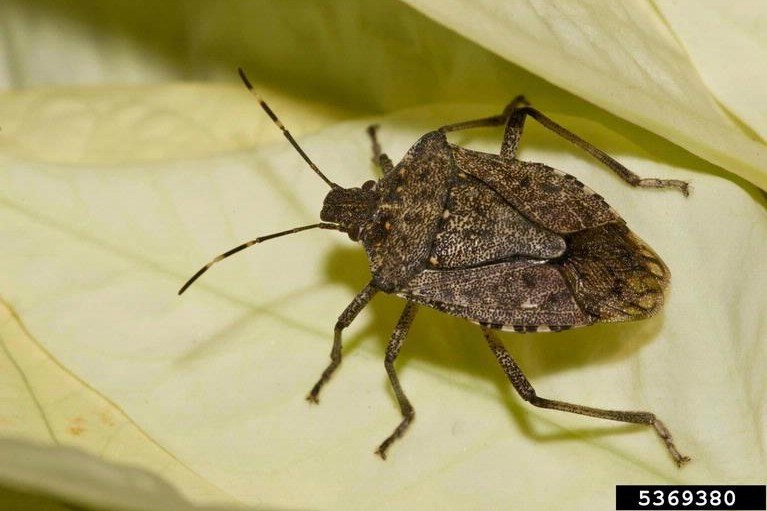What's 'bugging' you? Find out about invasive insect pests, and invasive plants, and aquatic invasive species that impact your home, garden and parks.

Photo: Susan Ellis, Bugwood.org
Many of us already know that non-native invasive species such as gypsy moth, the brown marmorated stinkbug and mile-a-minute cause both ecological and economic damage. For example, stinkbugs are plaguing homeowners and damaging crops. Invasive pathogens like West Nile Virus along with its non-native mosquito vectors affect both human and animal health and quality of life. These invaders are now established and breeding and the only option is management. Pennsylvania considers this issue important enough to have an Invasive Species Management Plan and have established the Pennsylvania Invasive Species Council web site. For information on national efforts to control invasive species, visit the National Invasive Species Information Center. To appreciate the border-less nature of the problem, visit the Global Invasive Species Database web site.
For more information about one of Pennsylvania's newest invasive species, visit the Penn State Extension spotted lanternfly website.
There are many other invasive animal, plant, insect and disease problems hovering near, or already in, Pennsylvania. Because of short travel times, commerce and tourism, people need to be aware of these potentially destructive 'visitors'. The best chance for not creating a local invasive species problem is to not bring it in. Next, local action to remove it when the organism is newly arrived but not yet fully established may work. Early detection combined with a rapid response for removal are critical. After that, we only have ongoing management of a problem. All of us are part of the problem and must be part of the solution. To gain a sense of the breadth of the issue, visit The Nature Conservancy Red Alert pages.
So, what can be done about invasive species?
- Prevention - Education is crucial
- Be Aware
- Be familiar with your yards and parks
- Is there something new?
- Do you know what it is
** Biological Inventories are important! First you need to know what belongs there!
- Take Action
- Plant native species
- DON'T dump aquaria, water garden materials, unwanted pets
- Report suspected infestations of invasive species - To Extension, Conservation District, PDA, DCNR
Early Detection allows a Rapid Response!
- Remove it!
Small infestations can be eradicated -
Once established, we can only try to manage the problem
Remember - The problem is global, but all action is local!
If you suspect you have any of these pests, or simply have a plant problem, Contact the York Master Gardeners Hotline
Penn State Educators:
Tim Abbey
Entomology - Invasive insect pests, Plant diseases
Connie Schmotzer
Master Gardener Coordinator - Invasive plants
More Information On:
Learn about Emerald Ash Borer, Asian Longhorned Beetle, and Thousand Canker Disease and other tree issues.
Many of the plants we see in our yards are not native to the mid-Atlantic region. Some of these plants are not good neighbors, and refuse to stay in our yards, with disastrous consequences.
Invasive species are not restricted to the land. Many invasive species that are problems in our water bodies are also part of our homes, as pets; in ponds or water gardens; or are moved via our recreational activities.
Consider the use of native plants in your yards and gardens instead of non-native plants. Here are resources to assist gardeners in making more eco-friendly selections.
Here are some unwelcome invasive guests common around the house or in your garden.

